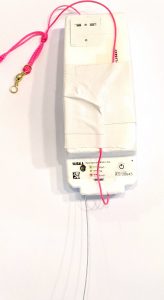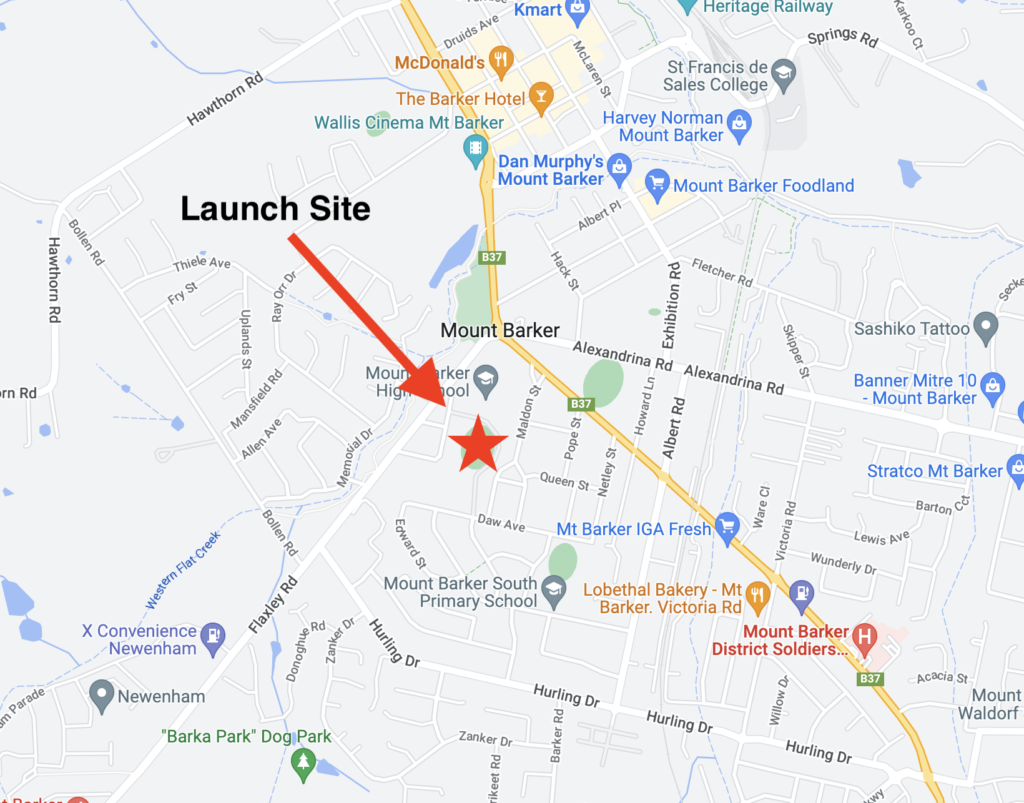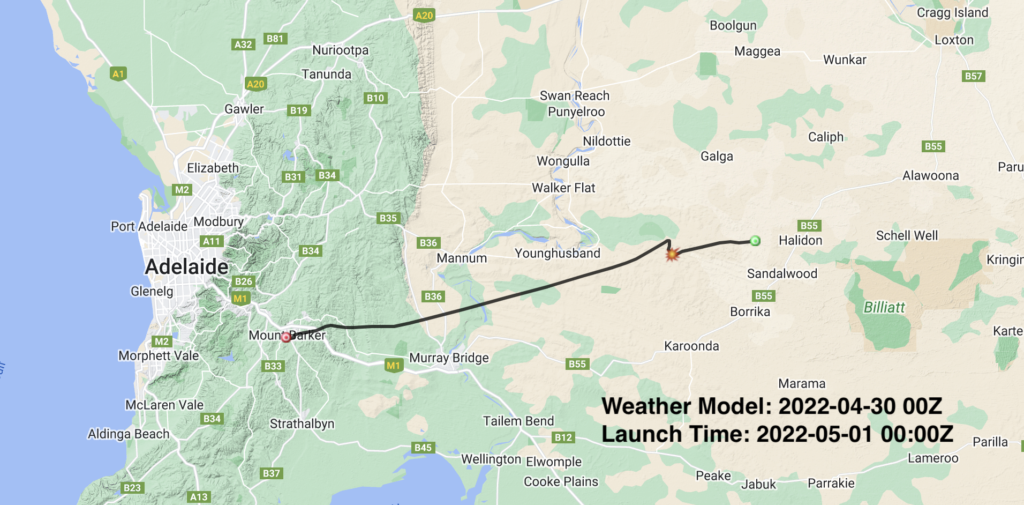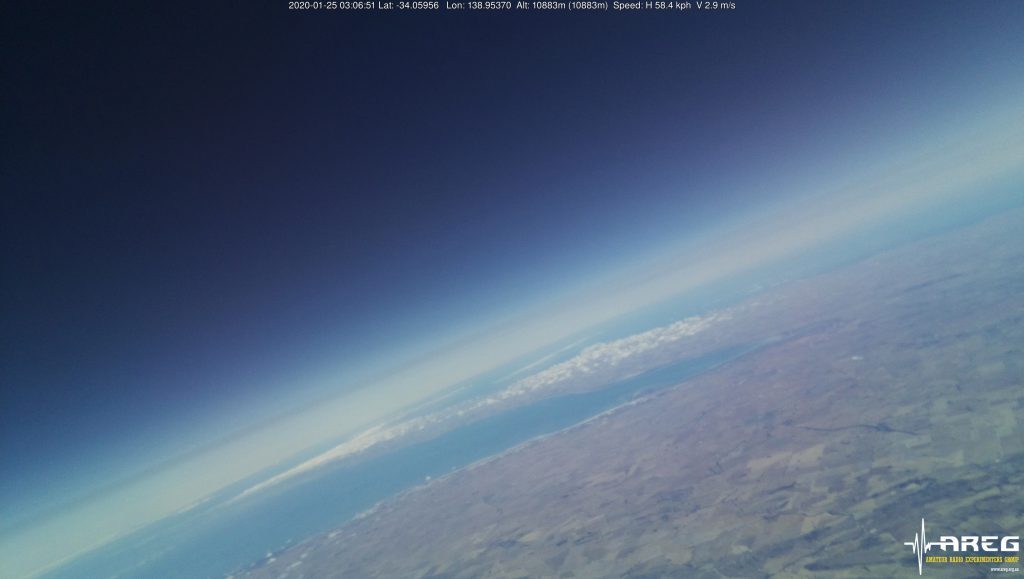Update Sunday 1st May: This telemetry-only launch was a great success, with many new stations contributing telemetry! There will be a separate post with information on the flight. We are still planning to perform the imagery flight next weekend, hopefully avoiding Mothers Day.
The AREG’s High-Altitude Ballooning sub-group, Project Horus, is planning their next launch for Sunday the 1st of May, with a planned launch time of 10 AM.
Updated Saturday 30th April
Due to adverse flight path predictions and cloud cover forecasts, the full imagery launch will not occur on Sunday the 1st of May, and will be postponed to the following weekend, (the exact day TBD) conditional on better weather forecasts.
However, since we have a NOTAM (NOtice To Air Missions) approved for the 1st of May, we will make use of it and do a telemetry-only launch, flying a single 70cm telemetry beacon. We are aiming for a maximum altitude of around 27km.
This is a great opportunity for those who have never tracked a Project Horus launch before to get setup to receive telemetry prior to the full-scale launch the following weekend. See below for information on how to receive the telemetry payload.
Live tracking for the flight will be available on the new SondeHub-Amateur tracker, at: https://amateur.sondehub.org/#!mt=Mapnik&mz=9&qm=1d&mc=-34.91286,139.36396&q=HORUS-V2
We will now be launching from the Mt Barker High School Oval, with the launch team on-site from approximately 9:30AM. Visitors are welcome!
The current flight path predictions have the payload landing to the east of Purnong:
Primary Telemetry – 434.200 MHz
 The primary tracking telemetry will be transmitted on 434.200 MHz using the Horus Binary 4FSK data mode. Amateurs in the Adelaide and Central SA region are also encouraged to get involved with the flight through receiving and uploading flight telemetry from our 70cm band tracking beacons. Every piece of telemetry data is valuable to the flight tracking and recovery teams so if you can help join the distributed receiver network to collect that data you will be making an important contribution to the project!
The primary tracking telemetry will be transmitted on 434.200 MHz using the Horus Binary 4FSK data mode. Amateurs in the Adelaide and Central SA region are also encouraged to get involved with the flight through receiving and uploading flight telemetry from our 70cm band tracking beacons. Every piece of telemetry data is valuable to the flight tracking and recovery teams so if you can help join the distributed receiver network to collect that data you will be making an important contribution to the project!
If you try receiving the telemetry from this flight, you’ll need a SSB-capable 70cm receiver (or a SDR), and the Horus-GUI telemetry decoder software. A brief guide on setting this up is available here: https://github.com/projecthorus/horusdemodlib/wiki/1.1-Horus-GUI-Reception-Guide-(Windows-Linux-OSX)
Note that you will need to use a ‘dial’ frequency of 434.199 MHz for the 4FSK signal to be centred in your receiver passband and hence be decodable.
Tracking Details – Imagery – 443.500 MHz
This payload will not be flying on Sunday the 1st of May. We hope to fly this on our backup launch date of Sunday the 8th of May.
Imagery on this flight will be transmitted via the Wenet downlink system, which uses 115kbit/s Frequency-Shift-Keying to send HD snapshots. Reception of the Wenet imagery requires a Linux computer, a RTLSDR, and a 70cm antenna with some gain (a 5-element Yagi is usually enough).
A guide on how to get set up to receive the Wenet signal is available here: https://github.com/projecthorus/wenet/wiki/Wenet-RX-Instructions-(Linux-using-Docker)
During the flight, the live imagery will be available at this link:



